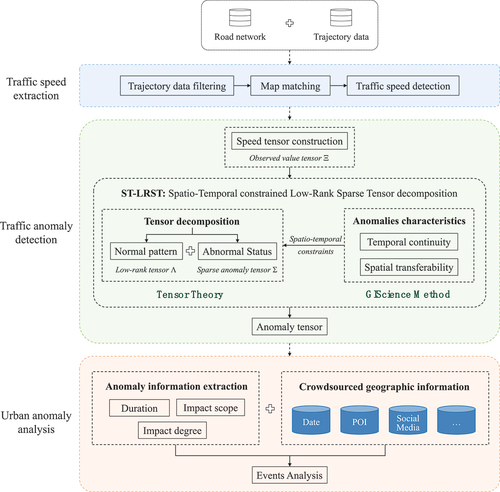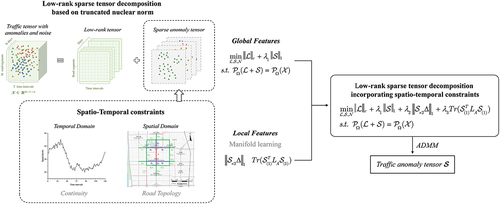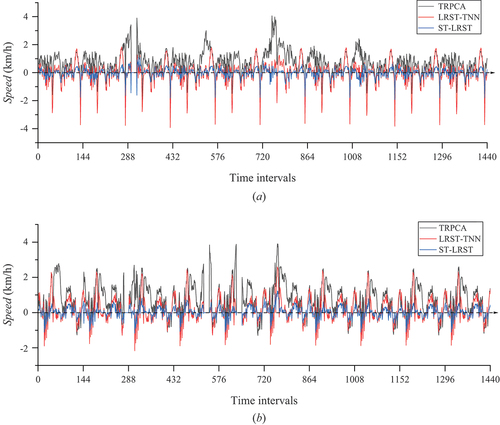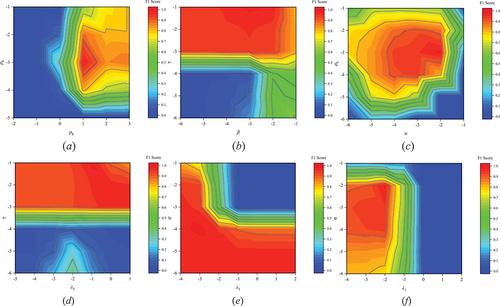Figures & data
Figure 3. Urban adjacent road topology. Central road a is adjacent to roads B1–B6 in the first order and roads C1–C15 roads in the second order.
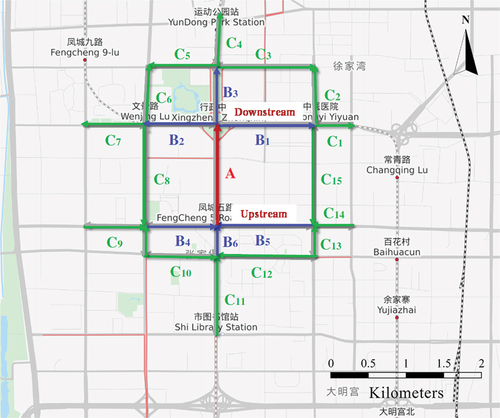
Table
Table 1. Analysis of abnormal traffic status on urban roads.
Figure 5. The urban road network in Xi’an, China. Brown lines indicate the major road segments in the study area.
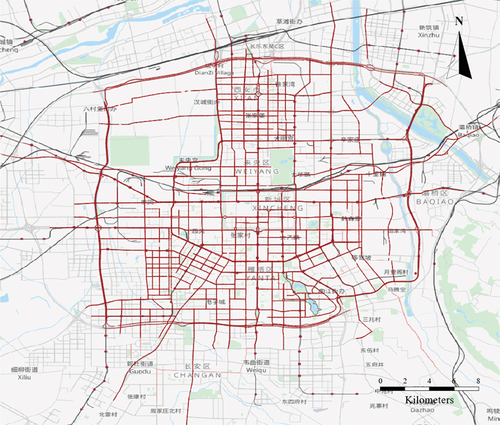
Table 2. Datasets used in this study.
Table 3. Anomalies simulated at different scales.
Table 4. Road segment traffic operation status classification.
Table 5. Description of different baseline models.
Table 6. Performance comparison for single-type anomaly detection. Bold values indicate the best performance among the considered models.
Table 7. Performance comparison for mixed-type anomaly detection. Bold values indicate the best performance among different models.
Figure 6. Daily pattern extraction results before and after the introduction of nonconvex functions. (a) road 1; (b) road 125. Blue shaded areas indicate injected anomalies.

Table 8. Impact of spatial and temporal constraints on anomaly detection accuracy. Bold values indicate the best performance among different models.
Figure 8. Effect of the introduction of spatio-temporal constraints on anomaly detection results. (a) time-192, without anomalies; (b) time-769, with anomalies. |Vc| indicates the change in speed due to anomalies.
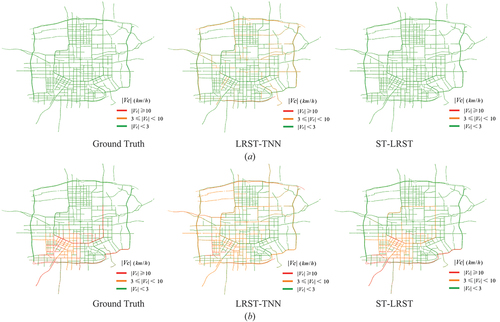
Figure 9. Anomaly detection map of urban roads in Xi’an on Tomb Sweeping Festival 2018. (a) 10:00 a.M. (b) 2:00 p.M. (c) 6:00 p.M. (d) 10:00 p.M. vc indicates the value of speed change due to anomalies.
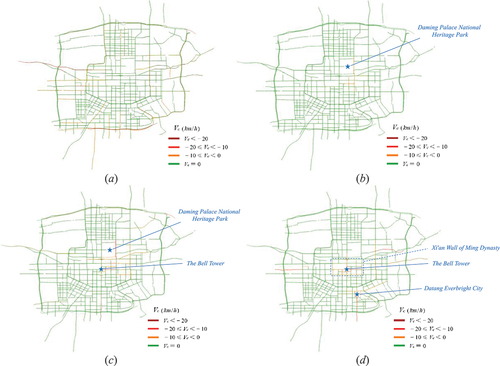
Figure 10. Map of road closures detected for the 2018 Xi’an International marathon. (a) schematic diagram of the race route, with red solid lines indicating the race roads and dashed lines indicating low-grade roads. (b) 7:30 a.M. (c) 8:30 a.M. (d) 9:30 a.M. (e) 10:30 a.M. (f) 11:30 a.M.
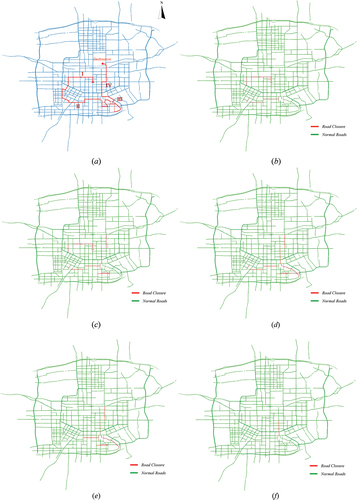
Figure 11. Map of detected road anomalies for the 2018 Xi’an International marathon. (a) 7:30 a.M. (b) 8:30 a.M. (c) 9:30 a.M. (d) 10:30 a.M. (e) 11:30 a.M. (f) 12:30 a.M. Marathon routes are shaded in blue.
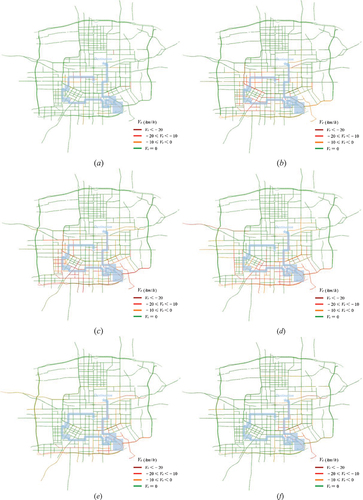
Table A1. Updated variables and related parameters.
Table A2. Parameter settings of ST-LRST model.


